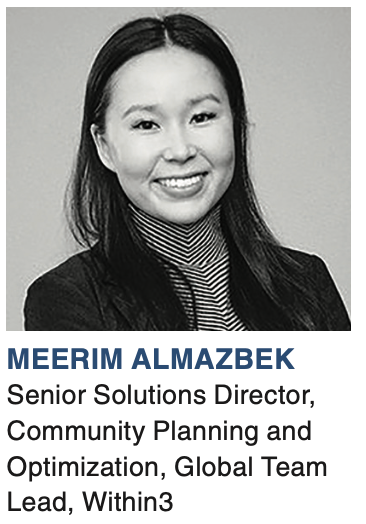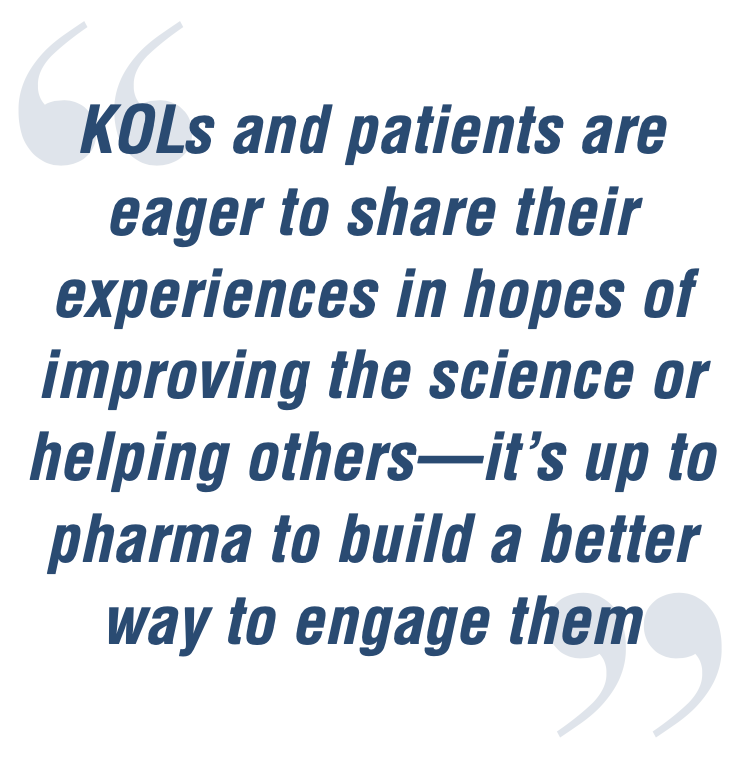- Sustainability
- DE&I
- Pandemic
- Finance
- Legal
- Technology
- Regulatory
- Global
- Pricing
- Strategy
- R&D/Clinical Trials
- Opinion
- Executive Roundtable
- Sales & Marketing
- Executive Profiles
- Leadership
- Market Access
- Patient Engagement
- Supply Chain
- Industry Trends
The Diversity Mindset: Benefits of Tapping External Sources
Seeking opportunities to be more inclusive can help pharma companies gain a deeper understanding of key opinion leader and patient perspectives and build diversity into the entire product journey.

Diversity and inclusion (D&I) issues are top-of-mind for many industries, and pharmaceutical organizations are no exception. As C-suites work to be more diverse from an executive management perspective, pharmaceutical teams can expand the directive by ingraining diversity throughout the product life cycle and viewing more activities through the lens of inclusion.
Pharmaceutical teams look outward—to both key opinion leaders (KOLs) and patients—for feedback and direction on critical projects that have wide-ranging ripple effects. In a global organization, it makes sense to include global voices—and harnessing a more diverse stream of input based on real-world experiences benefits all participants.
By identifying opportunities to be more inclusive, pharma companies can gain a better understanding of healthcare provider (HCP) and patient experiences, learn more about the markets they serve, and improve patient outcomes while building a competitive advantage.
Barriers to diversity for KOLs and patients
What are the barriers to more diverse perspectives from both KOLs and patients? For KOLs, it might be a matter of being a rising star as opposed to a superstar. Some KOLs find it difficult to get away from practicing in-clinic, due to a busy schedule or to being the only HCP in a large or remote geographic area. And many others simply don’t want to miss work or family commitments to travel for a one- or two-day meeting. There’s also the issue of hierarchy influence, in which less experienced professionals may remain quiet in face-to-face settings, or simply defer to more senior or experienced colleagues.
Patients face a different set of challenges. If travel is required for participation in a clinical trial, patients and caregivers may be unable or unwilling to make several trips to an investigation site because of work, family, or health reasons. In cases where pharmaceutical teams want to engage patients individually or in groups for insight-gathering purposes, patients may be reluctant to speak openly about personal health information or be candid about sensitive topics.
Many of these barriers can relate back to socioeconomic factors, particularly for patients, where it is one of the key factors in clinical trial dropout rates.1 This has ramifications for the length of the study, and can potentially lead to incomplete data sets and increased costs. These financial concerns can easily be overlooked while focusing on end objectives; as a result, patients from lower socioeconomic backgrounds can be excluded.
Identify the tools to break down barriers
Once the boundaries to representation have been identified, the next step is to implement the tools to remove them. For KOLs, this might mean reimagining how advisory boards and other expert interactions are designed and conducted.
For patients, options can include seeking input about clinical trial design or offering new ways for patients to engage in a more private and secure format. Both audiences could benefit from the ongoing reach of digital transformation, including virtual engagement platforms.
Virtual engagement lowers barriers to inclusion by eliminating dependence on location- and time-fixed meetings so pharma teams can increase accessibility across the board—both for KOLs who find it challenging to travel and for patients who have privacy or health concerns. Pharmaceutical teams report that gathering people around a virtual conference table creates a more equitable platform for forthright communication—junior HCPs can confidently share their relevant experiences, more reticent participants can contribute at length, and patients can participate without sharing identifying or sensitive information, regardless of their ability to travel to the clinic or other destination.
In a virtual setting, groups that have traditionally been excluded from important conversations can have the same access as anyone else, which results in more holistic feedback to inform patient treatment and education, better trial design, and HCPs who are better informed about how different patients may experience their condition.
Evaluating the progress
A clear vision for a more equitable experience for KOLs and patients, and the tools to implement it, only go so far. If pharma companies are serious about ensuring a diverse range of viewpoints and insights across the full spectrum of their business, evaluation measures need to make up the final part of the process.

Pharma companies should ask themselves which metrics they are looking to improve—is it patient retention or enrollment in clinical trials? Is it including KOLs from a variety of global regions and career levels? Approaching each project with the intent to increase the diversity of perspectives will have a direct impact on whatever metrics are chosen, and will, in turn, inform how future projects are planned and executed.
Developing a diversity mindset may begin at the top levels of the organization, but building diversity into the entire drug development life cycle ensures that it is an ongoing priority and a natural requirement of engaging with external stakeholders. KOLs and patients are eager to share their experiences in hopes of improving the science or helping others—it’s up to pharmaceutical companies to build a better way to engage them.
All of this comes down to communication and self-reflection. Direct consultation with groups you’re looking to engage inside or outside the company, can lead to additional insights, measurable feedback, and new avenues for representation that were previously untapped.
Reference
Meerim Almazbek, Senior Solutions Director, Community Planning and Optimization, Global Team Lead, Within3

